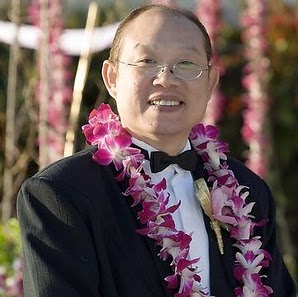John H Lo
age ~50
from Atlanta, GA
- Also known as:
-
- John Y Lo
- Lo Lo
- Lo John Yih
John Lo Phones & Addresses
- Atlanta, GA
- 2722 Albemarle Rd, Montgomery, AL 36107 • (334)2622318
- Marietta, GA
- Birmingham, AL
Education
-
Degree:undergraduate
-
School / High School:Univ of California Berkeley
Ranks
-
Licence:California - Active
-
Date:1981
Us Patents
-
Reversed Phase-Locked Loop
view source -
US Patent:5488332, Jan 30, 1996
-
Filed:Jun 10, 1994
-
Appl. No.:8/258347
-
Inventors:John De Lo - Decatur GA
-
Assignee:Oki Telecom - Suwanee GA
-
International Classification:H03L 708
H03L 7085
H03L 718 -
US Classification:331 25
-
Abstract:A phase-locked loop (PLL) frequency synthesizer is connected in reverse to a reference signal and a controlled oscillator loop including a low pass filter and a voltage-controlled oscillator (VCO). Rather than receiving a reference signal through a reference oscillator input and a VCO output signal through a VCO input, the PLL frequency synthesizer receives a reference signal through the VCO input and receives the VCO output signal through the reference oscillator input. Additionally, the output of the PLL is taken from the buffered reference output, thereby eliminating the need for an external buffer. Accordingly, the data loaded into the PLL frequency synthesizer accommodates the reversed input scheme by altering the divide ratios and inverting the phase detector output signal. In addition, a selective grounding network is connected to the reference oscillator input of the PLL frequency synthesizer to greatly reduce power consumption of the PLL frequency synthesizer, and as part of the same effort, a voltage switch is utilized to remove power to the VCO.
-
Reversed Phase-Locked Loop
view source -
US Patent:5602513, Feb 11, 1997
-
Filed:Jun 6, 1995
-
Appl. No.:8/466222
-
Inventors:John De Lo - Decatur GA
-
Assignee:Oki Telecom - Suwanee GA
-
International Classification:H03L 708
H03L 7085 -
US Classification:331 25
-
Abstract:A phase-locked loop (PLL) frequency synthesizer is connected in reverse to a reference signal and a controlled oscillator loop including a low pass filter and a voltage-controlled oscillator (VCO). Rather than receiving a reference signal through a reference oscillator input and a VCO output signal through a VCO input, the PLL frequency synthesizer receives a reference signal through the VCO input and receives the VCO output signal through the reference oscillator input. Additionally, the output of the PLL is taken from the buffered reference output, thereby eliminating the need for an external buffer. Accordingly, the data loaded into the PLL frequency synthesizer accommodates the reversed input scheme by altering the divide ratios and inverting the phase detector output signal. In addition, a selective grounding network is connected to the reference oscillator input of the PLL frequency synthesizer to greatly reduce power consumption of the PLL frequency synthesizer, and as part of the same effort, a voltage switch is utilized to remove power to the VCO.
-
Automatic Gain Control Circuit For Both Receiver And Transmitter Adjustable Amplifiers Including A Linear Signal Level Detector With Dc Blocking, Dc Adding, And Ac Removing Components
view source -
US Patent:5603113, Feb 11, 1997
-
Filed:Feb 9, 1995
-
Appl. No.:8/386080
-
Inventors:John De Lo - Decatur GA
-
Assignee:Oki telecom - Suwanee GA
-
International Classification:H04B 7005
-
US Classification:4552341
-
Abstract:A closed loop AGC circuit for a digital side of a dual mode cellular telephone wherein receiver and transmitter adjustable amplifiers are controlled by a linear feedback control system including a linear signal level detector which determines signal levels after a receiver baseband demodulator stage. The linear signal level detector receives a signal at an AC signal level and produces, through an averaging process, a DC received signal strength indication at a DC signal level which is linearly proportional to the AC signal level. The received signal strength indication is compared to a reference signal to produce a gain control signal which is linearly inverted and supplied as a receive gain control signal to the receiver adjustable amplifiers. The gain control signal is also combined with a transmit adjust signal received from the base station and supplied as a transmit gain control signal to the transmitter adjustable amplifiers.
-
Dual-Function Double Balanced Mixer Circuit
view source -
US Patent:5649288, Jul 15, 1997
-
Filed:Jun 6, 1995
-
Appl. No.:8/468019
-
Inventors:John De Lo - Decatur GA
He Feng Wang - Saitama, JP -
Assignee:OKI telecom - Suwanee GA
-
International Classification:H04Q 700
H04Q 900 -
US Classification:455 331
-
Abstract:A circuit for connecting multiple signal paths within a multi-mode communication device includes a double balanced mixer circuit selectively functioning as a modulation switch during an unbalanced state. As applied to a transmit section of a CDMA/FM cellular telephone, a dual-function double balanced mixer circuit connects a CDMA IF signal path with an FM audio signal path. The double balanced mixer circuit includes a double balanced mixer connected through oscillator input to an external LC (inductor-capacitor) tank connected to both a PLL (phase lock loop) and an FM audio signal. One signal input of the double balanced mixer receives a CDMA low IF signal, while the other double balanced mixer signal input is connected to a microprocessor-controlled switch for selectively unbalancing the balanced mixer while in the FM mode of operation.
-
Dual-Function Double Balanced Mixer Circuit
view source -
US Patent:5893030, Apr 6, 1999
-
Filed:May 25, 1994
-
Appl. No.:8/249261
-
Inventors:John De Lo - Decatur GA
He Feng Wang - Saitama, JP -
Assignee:Oki Telecom
-
International Classification:H04B 126
-
US Classification:455326
-
Abstract:A circuit for connecting multiple signal paths within a multi-mode communication device includes a double balanced mixer circuit selectively functioning as a modulation switch during an unbalanced state. As applied to a transmit section of a CDMA/FM cellular telephone, a dual-function double balanced mixer circuit connects a CDMA IF signal path with an FM audio signal path. The double balanced mixer circuit includes a double balanced mixer connected through oscillator input to an external LC (inductor-capacitor) tank connected to both a PLL (phase lock loop) and an FM audio signal. One signal input of the double balanced mixer receives a CDMA low IF signal, while the other double balanced mixer signal input is connected to a microprocessor-controlled switch for selectively unbalancing the balanced mixer while in the FM mode of operation.
Lawyers & Attorneys

John Yen-Chak Lo - Lawyer
view sourceLicenses:
California - Active 1981
Education:
Univ of California Berkeley
Degree - undergraduate
UC Berkeley SOL Boalt Hall
Degree - law
Degree - undergraduate
UC Berkeley SOL Boalt Hall
Degree - law
Name / Title
Company / Classification
Phones & Addresses
Sales
Comfort Leather Sofa Outlet
Furniture Designers & Custom Builders
Furniture Designers & Custom Builders
8-1248 Dundas St E, Mississauga, ON L4Y 2C1
(905)2720288
(905)2720288
CEO
FUZHOU FOOD INC
5203 Buford Hwy, Atlanta, GA 30340
President
Broadway Camera Ltd
Photography Equipment & Supplies-Retail · Online Retailer
Photography Equipment & Supplies-Retail · Online Retailer
(604)2329278, (604)7389800
Manager
Taipei 101 LLC
Full Service Restaurant
Full Service Restaurant
Birmingham, AL 35242
Sales
Comfort Leather Sofa Outlet
Furniture Designers & Custom Builders
Furniture Designers & Custom Builders
(905)2720288
incorporator
J.G.L., Inc
FOOD SERVICE
FOOD SERVICE
Montgomery, AL
Secretary,Director
EVERGREEN SEAFOODS, INC
Secretary
EVERGREEN INTERNATIONAL FOOD STUFFS, LTD
Googleplus

John Lo
Lived:
Atlanta, GA
Brooklyn, NY
Brooklyn, NY
Work:
JohnLo Photography - Main Photographer (1999)
Education:
St. John's University
Relationship:
Married

John Lo
Work:
SunEdison - Intern (2011)
The Web Picasso - Founder
The Web Picasso - Founder
Education:
Harvard University
Tagline:
Currently on work related leave

John Lo
Lived:
Atlanta, GA
New York, NY
New York, NY
Work:
JohnLo Photography - Wedding photographer
About:
Originally from New York City, but now living in Northwest Georgia... LOVING it!!!!!

John Lo
Work:
John lo

John Lo
Education:
Quarry Bay School

John Lo

John Lo

John Lo

John Lo
view sourcePlaxo

John Lo Re
view sourceEVO OVE

John Lo Giudici
view sourceVisual Media Solutions
Youtube
Get Report for John H Lo from Atlanta, GA, age ~50





